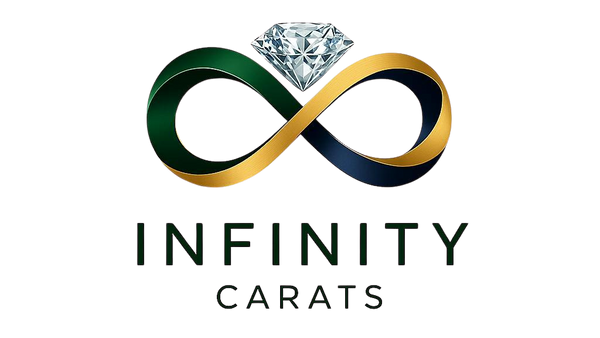What is the GIA Diamond Color Chart?
Share
What Are GIA Diamonds? A Complete Guide
Buying a diamond is exciting—but it can also be overwhelming. With terms like GIA certified, 4Cs, and clarity grades floating around, how do you know if you’re making the right choice? That’s where GIA diamonds come in. In 2025, GIA certification is the global benchmark for diamond quality, ensuring authenticity, brilliance, and long-term value. This guide explains everything about GIA diamonds, from certification to verification, so you can shop with confidence.
1. What Is a GIA Diamond?
A GIA diamond is a diamond graded and certified by the Gemological Institute of America, one of the most trusted authorities in gemology. Each diamond receives a certificate detailing its quality, ensuring buyers know exactly what they are purchasing.
2. Why Is GIA Certification Important?
GIA certification protects buyers and ensures transparent transactions:
-
Trusted Grading System: Unbiased and internationally recognized.
-
Verified Quality: Covers the 4Cs—Carat, Color, Clarity, Cut.
-
Investment Security: Certified diamonds hold better resale value.
-
Transparency: Avoid overpaying or buying misrepresented diamonds.
3. Key Components of a GIA Diamond Certificate
Every GIA certificate provides:
Carat Weight
Indicates the size and weight of the diamond.
Color Grade
Rated from D (colorless) to Z (light yellow/brown).
Clarity Grade
Assesses imperfections, ranging from FL (Flawless) to I3 (Included).
Cut Grade
Evaluates proportions, sparkle, and brilliance.
Measurements & Shape
Exact dimensions and diamond shape (round, princess, oval, etc.).
Plotting Diagram
Visual map of inclusions and blemishes.
4. Types of Diamonds Certified by GIA
-
Loose Diamonds: Perfect for custom rings.
-
Colored Diamonds: Fancy pink, yellow, or blue diamonds.
-
Lab-Grown Diamonds: Synthetic diamonds with identical properties to natural ones.
5. How to Verify a GIA Diamond
-
Check the GIA Report Number: Each diamond has a unique ID.
-
Use the GIA Online Database: Verify authenticity on the official website.
-
Compare Diamond Details: Ensure carat, color, clarity, and cut match the certificate.
6. Benefits of Buying a GIA Certified Diamond
-
Peace of Mind: Know exactly what you’re purchasing.
-
Better Pricing: Pay for what the diamond truly offers.
-
Enhanced Resale Value: Globally recognized certification.
-
Assured Quality: Independent, unbiased grading system.
7. FAQs About GIA Diamonds
Q1: What does GIA stand for?
A: GIA stands for Gemological Institute of America, the world’s leading diamond grading authority.
Q2: How is a GIA diamond different from a non-certified diamond?
A: A GIA diamond comes with a verified grading report, ensuring clarity, cut, color, and carat weight are accurately represented.
Q3: Can I verify my GIA diamond online?
A: Yes! Every GIA diamond has a unique report number that can be verified on the official GIA website.
Q4: Are GIA diamonds more expensive?
A: Slightly higher prices reflect the trust, transparency, and resale value that GIA certification provides.
Q5: Does GIA certify lab-grown diamonds?
A: Yes, GIA certifies both natural and lab-grown diamonds with the same strict standards.
8. Conclusion
A GIA-certified diamond is more than a beautiful gemstone—it’s a guarantee of quality, authenticity, and lasting value. Whether buying an engagement ring, a gift, or an investment piece, choosing a GIA diamond ensures you’re making a confident and informed decision.
Invest wisely, choose a GIA-certified diamond, and let its brilliance shine for a lifetime.
